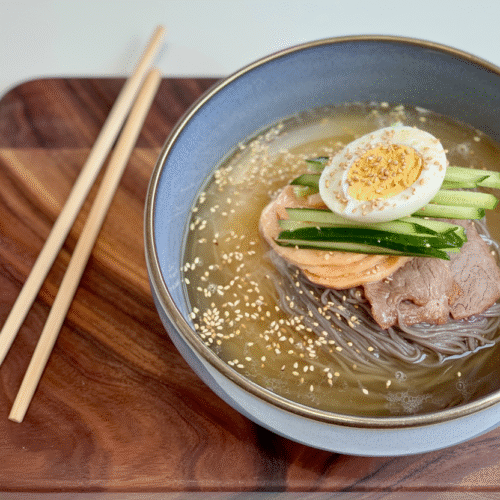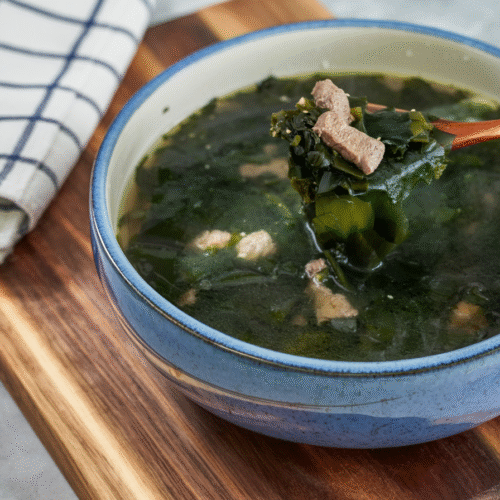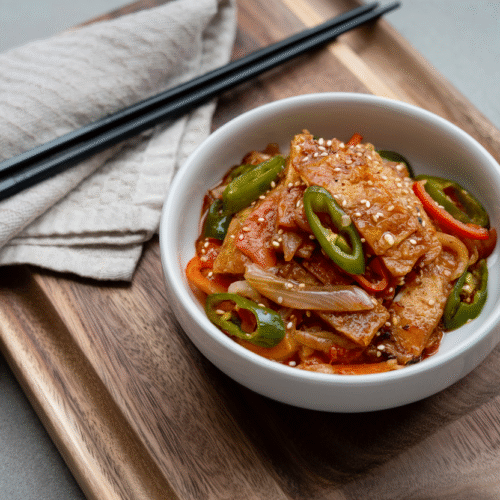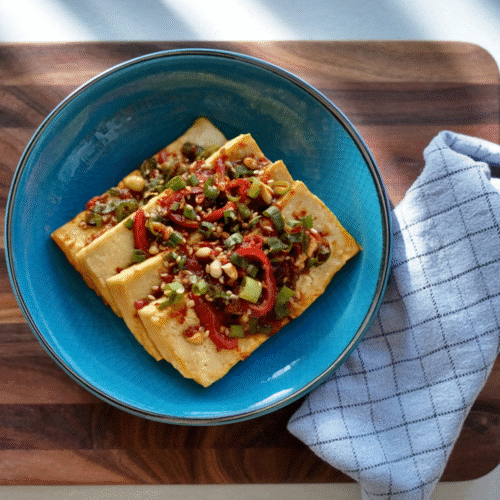Ingredients
For the Braising Sauce
- 4.5 tablespoons gochugaru (Korean red pepper flakes)
- 3 tablespoons gochujang (Korean red pepper paste)
- 4.5 tablespoons light brown sugar
- 1/3 cup low-sodium soy sauce
- 1.5 teaspoons dwenjang (Korean fermented soybean paste)
- 1 tablespoon Buldak spicy ramen sauce
- 1.5 teaspoons minced ginger
- 3 tablespoons minced garlic
- 3/4 cup diced onion
For the Stew
- 3 lbs bone-in chicken drumsticks
- 2 large russet potatoes, cut into large chunks
- 2 large carrots, cut into large chunks
- 2 serrano peppers, sliced
- 2 cups chicken stock
- 1.5 teaspoons toasted sesame oil
- 1 teaspoon sesame seeds
- 3 green onions, chopped
First, Make the Sauce and Prep the Chicken
In a large bowl, combine all of the braising sauce ingredients, from the gochugaru to the diced onion. Add the white and light green parts of the green onions to this sauce, reserving the dark green tops for garnish.
Make 2-3 deep slashes into the meatiest part of each chicken drumstick. This helps the sauce penetrate the meat.
Add the chicken to the bowl with the sauce and toss until every piece is thoroughly coated.
Next, Braise the Stew
Transfer the sauced chicken to a large, shallow pot or Dutch oven. Pour the chicken stock into the mixing bowl and swirl it around to collect any leftover sauce, then add it to the pot.
Bring the stew to a boil over medium-high heat, then cover, reduce the heat to medium, and let it cook for 20 minutes. The sugar in the sauce can burn, so stir it occasionally to make sure nothing is sticking to the bottom.
After 20 minutes, add the potatoes, carrots, and serrano peppers to the pot. Stir everything together, making sure the vegetables are mostly submerged in the sauce. Cover and cook for another 15-20 minutes.
Finally, Finish and Serve
The stew is done when the potatoes are tender and can be easily pierced with a chopstick.
Uncover the pot, drizzle in the toasted sesame oil, and stir. Let it continue to cook, uncovered, for another 5 minutes to allow the sauce to thicken slightly.
Turn off the heat, top with sesame seeds and the reserved chopped green onion tops, and serve immediately with hot rice.
Korean Spicy Chicken Stew (Dakdoritang)

Ingredients
For the Braising Sauce
- 4.5 tablespoons gochugaru Korean red pepper flakes
- 3 tablespoons gochujang Korean red pepper paste
- 4.5 tablespoons light brown sugar
- 1/3 cup low-sodium soy sauce
- 1.5 teaspoons dwenjang Korean fermented soybean paste
- 1 tablespoon Buldak spicy ramen sauce
- 1.5 teaspoons minced ginger
- 3 tablespoons minced garlic
- 3/4 cup diced onion
For the Stew
- 3 lbs bone-in chicken drumsticks
- 2 large russet potatoes cut into large chunks
- 2 large carrots cut into large chunks
- 2 serrano peppers sliced
- 2 cups chicken stock
- 1.5 teaspoons toasted sesame oil
- 1 teaspoon sesame seeds
- 3 green onions chopped
Instructions
- Mix gochugaru, gochujang, brown sugar, soy sauce, dwenjang, Buldak sauce, ginger, garlic, and onion in a large bowl.
- Cut 2-3 deep slashes in each chicken drumstick.
- Coat chicken thoroughly in sauce mixture.
- Transfer chicken and sauce to Dutch oven. Rinse bowl with stock and add to pot.
- Bring to boil over medium-high heat, cover, reduce to medium, cook 20 minutes, stirring occasionally.
- Add potatoes, carrots, and peppers. Cover and cook 15-20 minutes.
- Once potatoes are tender, add sesame oil and cook uncovered 5 minutes to thicken sauce.
- Garnish with sesame seeds and green onions.
- Serve with rice.





